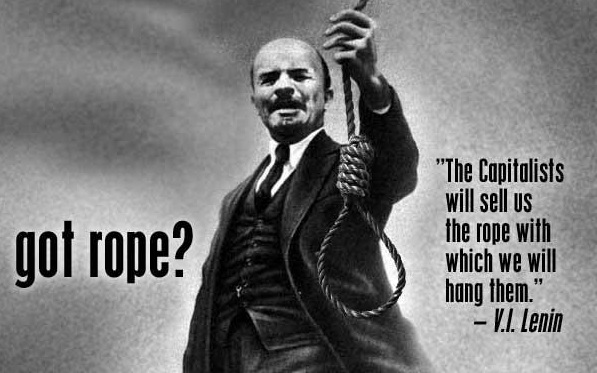When IDEA published Steve Keen’s 2015 Global Economic Outlook in January, its predictions were well outside the consensus. Today, only five months later, the gap has substantially closed, without revising the outlook. Indeed, we witnessed a remarkable revision to the consensus Q1 US GDP forecasts, when they came down dramatically in April, after the quarter had closed, forecasting the past.
Serious trouble in China, stagnation in Europe, weakening US data – none of it conclusive in terms of timing, but the pattern is ever more clear. Prof. Keen’s assessment is built on a model of the economy which recognizes the centrality of private debt and the change in private debt. The model integrates money, credit and banking and utilizes non-linear dynamics to simplify a complex system. In each of these ways it is unique among its peers.
Are debt bubbles turning? Signs are worrying, the eventuality is certain, but it is too soon to make the call on timing. Debt bubbles exist, and there is an inevitable price to pay for having grown them. It is the great failure of the policy response to the 2008 financial crisis that it ignored private debt in favour of obsessing about government debt, choosing to manipulate asset markets through quantitative easing and zero interest rates, in a vain hope this would somehow inflate the real economy. In a modern credit society, however, the narrow money supply under the control of central banks does not flow into the real economy as its creators imagine. Broad money in developed economies is absorbed in the financial sector, never reaching employment and production. Thus we say asset markets are “manipulated,” whether by design or by ignorance. Absent a change in the policy framework, the outlook for the medium term remains stagnation in real economies and increasing fragility in financial markets.
United States:
America is “turning Japanese.” Private debt dynamics, seen particularly in Prof. Keen’s “credit accelerator” model, give prospect for a weak growth in the early part of 2015, but the outlook grows darker as the year progresses. Private deleveraging has stalled at well above sustainable levels of debt. The real economy is less and less able to absorb more debt, even as the financial markets use credit to fuel speculation and financial engineering.
Without substantial, even massive, government spending or a drastic reduction in private debt, the US will follow the pattern Japan set, a debt stagnation (not to be confused with the ill-defined “secular stagnation” hypothesis of Lawrence Summers).
China:
The End of the Bubble? China’s private debt has grown explosively since the crisis. It could grow further, as Prof Keen pointed out in the 2015 Outlook. Running a trade surplus allows a country to carry a higher level of debt. But it must stop somewhere. Recent evidence – empirical and anecdotal – suggest the problem may be reaching a head: the first foreign debt default, the first State Owned Enterprise default, wobbly Wealth Management (shadow banking) products. A recent 100 bps cut in Reserve Rate Requirements is bordering on extreme, and may show, if not desperation, at least very serious concern in the Chinese bureaucracy. The imports of goods and services from other Asian – particularly ASEAN – nations have dropped dramatically in some anecdotal reports.
Japan:
America may be “turning Japanese,” as in entering a debt-induced long-term stagnation following the collapse of a credit bubble, but Japan itself may be entering its own new phase. Abenomics has basically “succeeded” by weakening the yen and giving a false impression of inflation. Maintaining control of the economy is becoming ever more challenging in spite of spectacular levels of cash (much of it invested outside the country to avoid the fundamentally deflationary internal dynamics). The hoped-for rise in real incomes that was loudly celebrated last year turns out to have been mis-reported, to the delight of conspiracy theorists everywhere.
Europe:
Perhaps the poster child for self-inflicted wounds, the Eurozone continues its slide into stagnation. As prof. Keen said in the Outlook:
Austerity policies began in Europe in mid-2010, roughly two years after the start of the Global Financial Crisis, in the belief that Europe faced a “sovereign debt crisis”. Though these policies were supposed to be an intelligent response to an economic crisis, their impact has been to amplify the downturn begun by the Global Financial Crisis itself.
Greece: Finance ministers are currently arrayed in a circular firing squad around the no-longer-hapless Greeks. If the absurdity of austerity cannot be imposed by the official liquidity squeeze on the Hellenic Republic (Greek is not insolvent, it is illiquid), it seems the Troika institutions stand ready to enforce default and accept whatever consequences might issue from the opaque financial markets. Many of Greece’s friends would welcome the Grexit and the prospect of regaining control of fiscal, monetary, exchange rate and trade policies for their democracy, but the Syriza government seems willing to pay a high price to stay in the euro and retain their membership card in the Club of Europe. [IDEA published A Comprehensive Proposal for a Complementary Currency last month as its contribution to that effort.]
But the Troika institutions seem ever more confident that they have insulated the rest of the Eurozone and isolated the victims of austerity. While the failure of Greece after de facto expulsion may have been accounted for, we wonder whether a recovery might not be more dangerous to the European project. There seem to be a lot of bankers and lawyers in the room when decisions are being made and very few economists. The populations of Italy, Spain and Portugal, among others, are watching with increasing attention.
MARKETS
Precise timing of economic events is subject to the vagaries of policy and to institutional reaction. Markets are affected by a monetary policy issuing from central banks that has not found its way through to the real economy. This is common knowledge. A. Gary Shilling refers to it as “the great disconnect.” Financial markets are buoyant on a sea of easy credit and react most dramatically to perceived changes in the terms of this credit, to what in the US is known as Fed “tightening.” The prospect of even a 25 bps raise, its timing – in June, September, or off into 2016 – produces an enormous amount of print and video. However such rumours affect market players, there is five years of evidence that they are trivial to real economic outcomes. It is our view that a “data dependent” Fed will stall increases in short rates into 2016, but even if a modest bump or two is instigated, long rates will be unaffected, and again, no renewal of the stagnant economy. It is conceivable that if the Fed were to hike earlier, and the downturn we expect from Steve Keen’s analysis occurred, that the rate action would be blamed.Ours is an economic analysis, not a market prediction, but it is impossible to ignore the disconnection between the limping economy and the buoyant financial markets.
A simple log chart of real GDP by Douglas Short here, shows actual growth 14.1 percent below trend, the largest negative spread in the history of the series. Unless you are on the sell side of Wall Street, you can probably see that disconnect. If so, we encourage you to look further and examine our model of private debt and the change in private debt as a useful window into the real world.
Markets are highly distorted by the futile (for the economy) policies of QE, as liquidity is being sucked into financial assets and never reaches the real economy. This is the liquidity trap. It is not a matter, as some would say, of a zero lower bound preventing real investment. It is a matter of uncertainty driving investors into apparent safety.
Whilst short-term fluctuations can often be misleading, the logic, evidence and conclusions of Prof. Keen’s model remain intact, confirmed by the first four months of 2015 as they have been by the past 35 years. Economic data are weakening across the globe in the pattern predicted in Steve Keen’s 2015 Economic Outlook, published by IDEA in January.
Professor Steve Keen is the Chief Economist at the Institute for Dynamic Economic Analysis (IDEA) and the Head of the School, Economics, History and Politics, Kingston University London, with the mandate to form the first truly heterodox economics department in Europe. Steve was cited as the economist who best predicted the Great Financial Crisis and the Great Recession. He was among a remarkably small number who foresaw the crisis and raised the alarm in advance of the largest economic event of the post-Depression era.
Steve authored the book Debunking Economics, a tour de force on economic history, theory and practice, as well as the influential Debtwatch website and dozens of scholarly papers. His work develops the insights of financial Keynesian economist Hyman Minsky with mathematical modeling of Minsky’s Financial Instability Hypothesis. He is internationally known, recipient of the award for the economist who best predicted the 2007 financial crash and the ensuing global financial crisis, respected by both professional and lay observers.
IDEAeconomics (Institute for Dynamic Economic Analysis) is a think tank dedicated to raising awareness of the importance of private debt in economics, and to the reform of economic theory and policy.
To follow up on this paper please contact Alan Harvey,
executive director at IDEA economics:
[email protected].
This update has been prepared using information based on the research capabilities of IDEAeconomics and represents the current opinion of IDEAeconomics. The opinions expressed are subject to change without notice. Where information has been sourced from parties outside IDEAeconomics, these are generally believed to be reliable but reliability and accuracy is not guaranteed. This commentary is for informational purposes only and does not in any way constitute investment advice and should not be construed as an offer to sell, a solicitation to buy, or an endorsement or recommendation of any company or security in any jurisdiction. Nothing in this document constitutes a formal legal opinion or constitutes investment advice.
Each reader should consider whether this research is entirely or partially suitable for their particular circumstances and, if appropriate, seek additional, specific, professional advice. Neither IDEAeconomics nor its officers can accept any liability for the consequences of any action taken or not taken as a result of reading this commentary.


